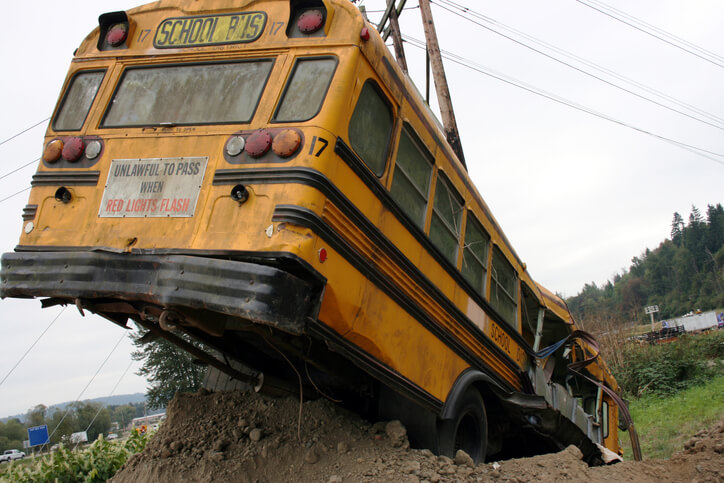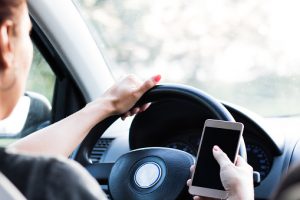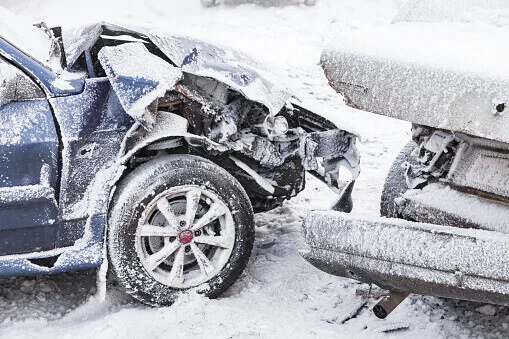Safety Tips
-
 Distracted Driving and Motorcycle Crashes: Who Is At Fault?View Article
Distracted Driving and Motorcycle Crashes: Who Is At Fault?View ArticleDistracted driving is one of the most common hazards on roadways nationwide. The impact that seemingly simple actions can have often goes overlooked, and it extends far beyond just using a mobile device. Nearly every action taken behind the wheel that takes a driver’s focus away from driving can be considered a distraction. Where this […]
-
 How to obtain and read a copy of your Kansas car accident reportView Article
How to obtain and read a copy of your Kansas car accident reportView ArticleWhen the police respond to a crash, they conduct a comprehensive investigation and document the details in a five-page car accident report. Your Kansas car accident report is a critical piece of evidence when pursuing a claim. It can provide non-biased details pertaining to how your crash occurred. Sometimes, the police make errors when filling […]
-
 Should seat belts be mandatory for all new Kansas school buses?View Article
Should seat belts be mandatory for all new Kansas school buses?View ArticleSchool buses are the safest mode of transportation for school children, according to the National Highway Traffic Safety Administration. They are highly visible — with flashing lights and stop arms that alert drivers to stop. They also include closely-spaced seats with absorbable, cushioned seatbacks. Many states, including Kansas, don’t require seatbelts on school buses, however. While […]
-
 How Does Kansas Rank For Distracted Driving Accidents?View Article
How Does Kansas Rank For Distracted Driving Accidents?View ArticleHave you ever traveled on a major roadway in Kansas and seen another driver looking at a cellphone? Perhaps you witnessed a close call with a distracted driver. If you suspect that distracted driving is becoming more prevalent in Kansas, you may be right. A recent study conducted by financial website MoneyGeek identified a trend of distracted […]
-
 How winter weather can catch Kansas drivers by surpriseView Article
How winter weather can catch Kansas drivers by surpriseView ArticleKansas may not get as much snow as some of its neighboring states, but when it does snow here, things can get messy. On average, Kansas receives about 19 inches of snow each year. Around mid-December, Kansas was among several states in the Midwest to get clobbered with snow and ice, according to The Weather Channel. There were […]
-
 Why do dangerous X-Lite guardrails still remain on Kansas roads?View Article
Why do dangerous X-Lite guardrails still remain on Kansas roads?View ArticleGuardrails are a common sight on major Kansas roads and highways. They prevent roadway departures near steep declines, bodies of water, critical roadside structures, ditches, and trees. While collisions with guardrails can be catastrophic, they are supposed to help prevent severe or fatal crashes. One particular guardrail manufacturer has come under legal fire in recent […]
-
 Kansas Attorneys Offer Best Ideas to Prevent Crashes in School ZoView Article
Kansas Attorneys Offer Best Ideas to Prevent Crashes in School ZoView ArticleStudents throught Kansas recently went back to school. That means a sharp rise in child pedestrians and bicyclists, increased traffic in school zones, and school buses that make frequent stops. Many drivers, however, are still adjusting to the change. The greatest risk children face at the beginning of the school year is in school zones […]
-
 Best Ideas to Avoid Bicycle-Related Traffic Deaths on Kansas RoadsView Article
Best Ideas to Avoid Bicycle-Related Traffic Deaths on Kansas RoadsView ArticleRoute 66 is an American staple that many tourists and historians have romanticized about for nearly a century. During its prime, it was once congested with motor vehicles, dotted with gas stations, and full of roadside charm. Once dubbed “Bloody 66,” however, the iconic roadway – which stretches from Chicago, IL to Santa Monica, CA […]
-
 3D Crosswalks and Pedestrian Accidents: Insights from Kansas AttorneysView Article
3D Crosswalks and Pedestrian Accidents: Insights from Kansas AttorneysView ArticlePedestrian accidents happen far too often throughout the state of Kansas, especially in large cities such as Wichita. Unlike drivers in cars, pedestrians don’t have vehicle frames, airbags, and seatbelts protecting them. Injuries sustained in these accidents are often serious and potentially even fatal. Pedestrians are often struck by distracted drivers, speeders, reckless drivers or drunk […]
-
 Wet Roads and Auto Accident Risks: Insights from a Kansas AttorneyView Article
Wet Roads and Auto Accident Risks: Insights from a Kansas AttorneyView ArticleRain leads to more car accidents than any other inclement weather According to recent data released from AAA Kansas, rain causes more auto accidents than any other weather condition. Roughly 68% percent of weather-related auto accidents (or 518,000) each year are caused by rain-washed roads. That is more than weather-related accidents caused by sleet, snow, and […]


